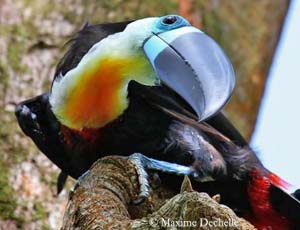
The different bills’shapes - Page 5
Show me your bill, I will know what you eat!
Photographers:
Maxime Dechelle
LEPAPARRAZO
Patrick Ingremeau
TAMANDUA
Callie de Wet
GALLERY
Steve Garvie
RAINBIRDER Photo galleries
Tom Merigan
Tom Merigan Photo galleries
Didier Buysse
Vision d'Oiseaux
Nicole Bouglouan
PHOTOGRAPHIC RAMBLE
Text by Nicole Bouglouan
Sources:
HANDBOOK OF THE BIRDS OF THE WORLD Vol. 7 by Josep del Hoyo-Andrew Elliott-Jordi Sargatal – Lynx Edicions – ISBN: 8487334377
HANDBOOK OF THE BIRDS OF THE WORLD Vol 6 by Josep del Hoyo-Andrew Elliott-Jordi Sargatal - Lynx Edicions, 2001 - ISBN: 848733430X
L’ENCYCLOPEDIE MONDIALE DES OISEAUX - Dr Christopher M. Perrins - BORDAS - ISBN: 2040185607
See the article: Description of the bird and its plumage
We have to mention the stunning bills of toucans and hornbills.
Toucans have long, narrow, brightly coloured bill, curving downwards at the tip. This bill shows small to large saw-like edges or “teeth”, used to tear off parts of some larger fruits.
Toucans’ bills are much lighter in weight than they appear because it is a hollow structure. The narrow tongue is very long, laminated along the sides and covered with bristles towards the tip.

Ariel Toucan
Ramphastos vitellinus ariel
Toucans seize the food with the bill tip. Then, in order to throw back the food item into the throat, they perform an upwards toss of the head before to swallow.
The bill is also used for digging out in soft matter. Some toucanets are able to excavate a cavity nest into soft rotten wood. Toucanets are smaller than toucans.
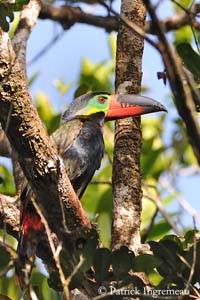
Guianan Toucanet
Selenidera koulik
In the same family of Ramphastidae, the araçaris have more jagged bill sides than toucans and toucanets.
All are fruit eaters, but they also take large insects and some lizards, eggs and chicks of small birds’ species.
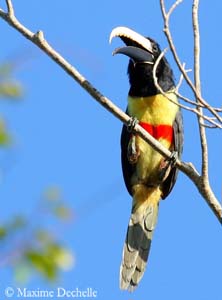
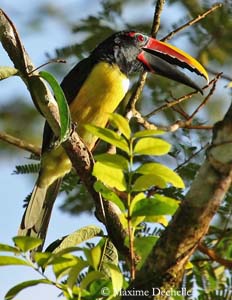
Black-necked Araçari
Ptetoglossus araçari
Green Araçari
Pteroglossus viridis
Hornbills are amazing birds. They often have a huge bright coloured bill, with casque or not. As in toucans, these bills are hollow and much lighter than they appear too.
According to the species, the bill may be relatively short and deep to long and slender. It is always down-curved, but the curvature varies, and some species may have straight bill.
The bill sides are smooth or show a series of ridges across the base. In the same way, the cutting edges may be smooth or heavily serrated.
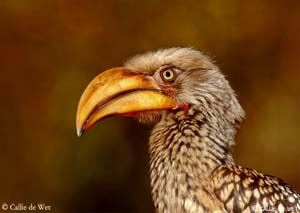
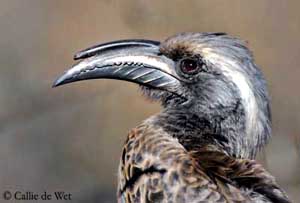
Southern Yellow-billed Hornbill
Tockus leucomelas
African Grey Hornbill
Tockus nasutus
But hornbills have unique feature that is the casque on the top of the bill, and there is a diversity of forms among all the members of this family. The development of this casque may last up to six years.
This huge hollow structure may function as a resonating chamber that probably gives the loud nasal calls of some large hornbills.
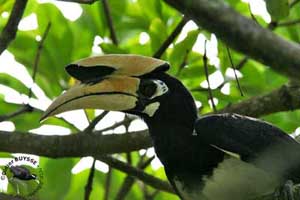
Northern Pied Hornbill
Anthracoceros albirostrus
The casque can have multiple functions such as the sexual difference in size between male and female, and probably play an important role in defence and courtship displays.
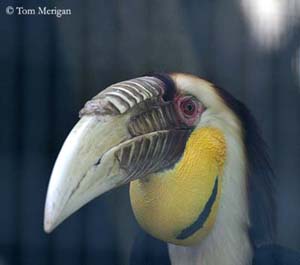
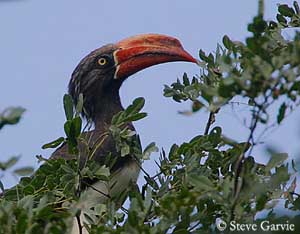
Wreathed Hornbill
Rhyticeros undulatus
Tockus alboterminatus
In addition, the bill is used to chisel off the bark, to catch preys and to eat large fruits. They often carry the food items in the tips of the mandibles.
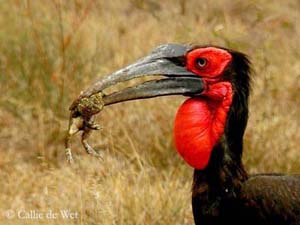
Bucorvus leadbeateri
Hornbills feed on fruit, rodents, snakes, large insects… They usually are omnivorous, and the frugivorous species live more in forested habitats than carnivorous hornbills are found in savannahs.
Very different, the members of the Family Psittacidae are fruit, seed and nectar eaters.
They have typical down-curved hooked bill.
This bill may be more or less long, according to the species.
The difference is in the tongue, very peculiar according to each group.
Birds feeding on pollen and nectar have brush-like tongue.
Cockatoos have narrow shorter tongue, whereas parrots have broad and fleshy spoon-tipped tongue.
The parrots and macaws are able to crack open very hard shells of exotic fruits or seeds, thanks to their large strong bill.
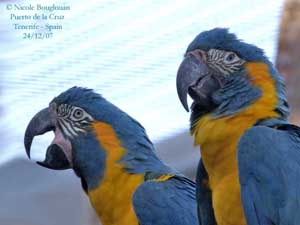
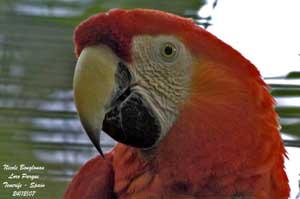
Ara glaucogularis
Ara macao
Some species use their bill in particular way, such as the Western Corella and the Long-billed Corella which have long upper mandible, used to dig up the underground parts of several native plants. Both feed mainly on the ground.
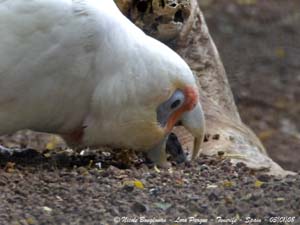
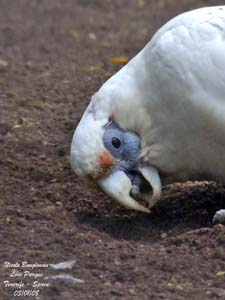
Cacatua tenuirostris
Cacatua pastinator
Other species such as Keas have long, down-curved, deeply hooked upper mandible. Kea feeds on seeds, foliage, insects and nectar, as other parrots. But its sharp, hooked bill allows it to dig out roots and grubs. It also uses the upper part of its bill for tearing up carcasses.
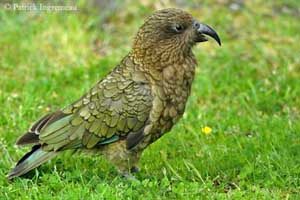
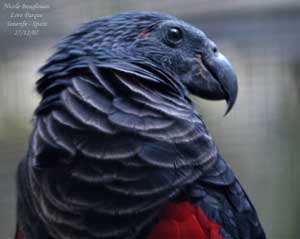
Nestor notabilis
Psittrichas fulgidus
The bill is also used as hook and tool when the bird climbs into the branches.